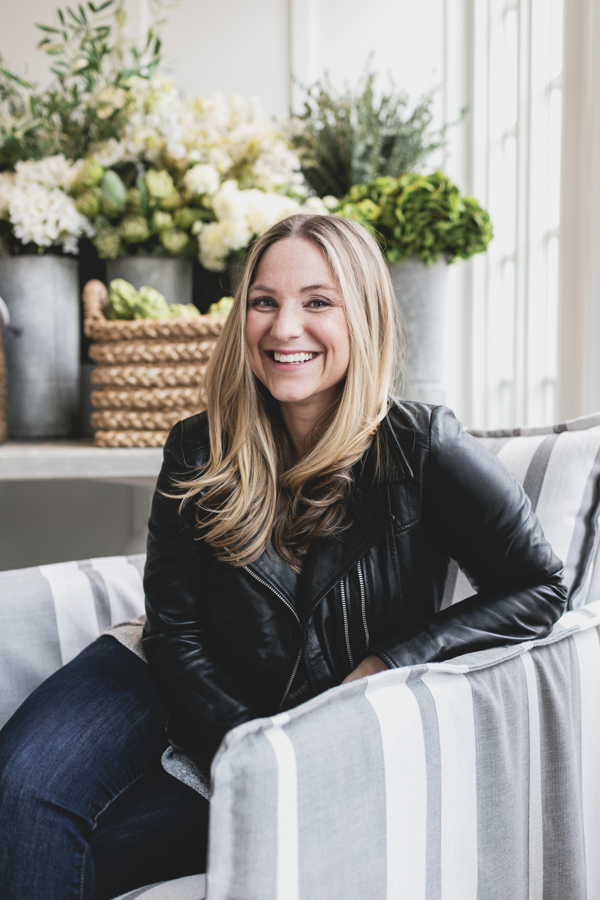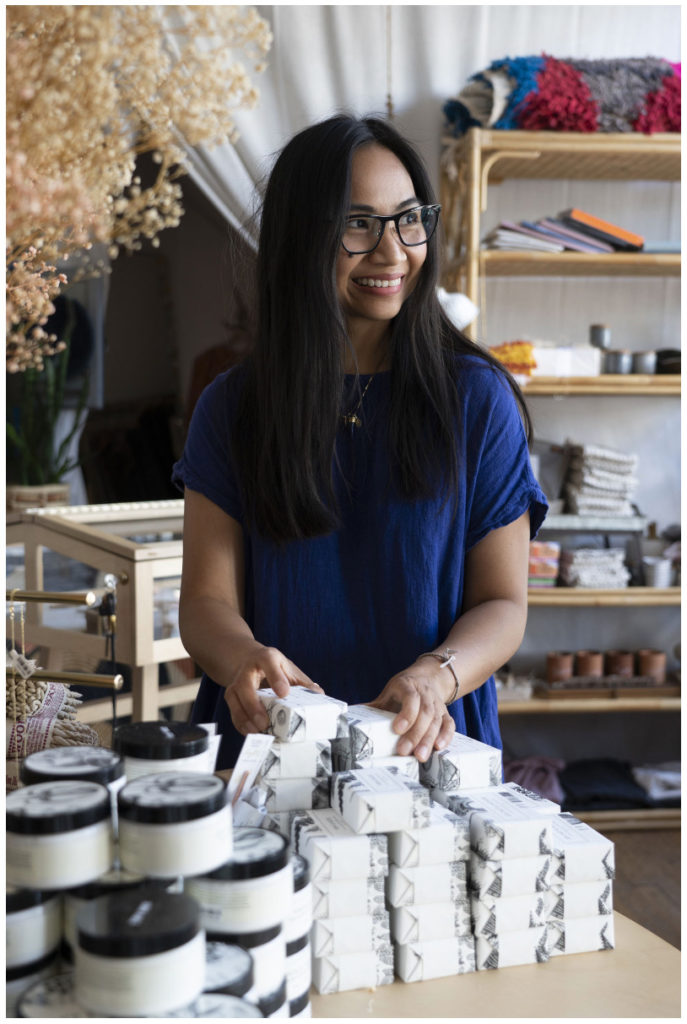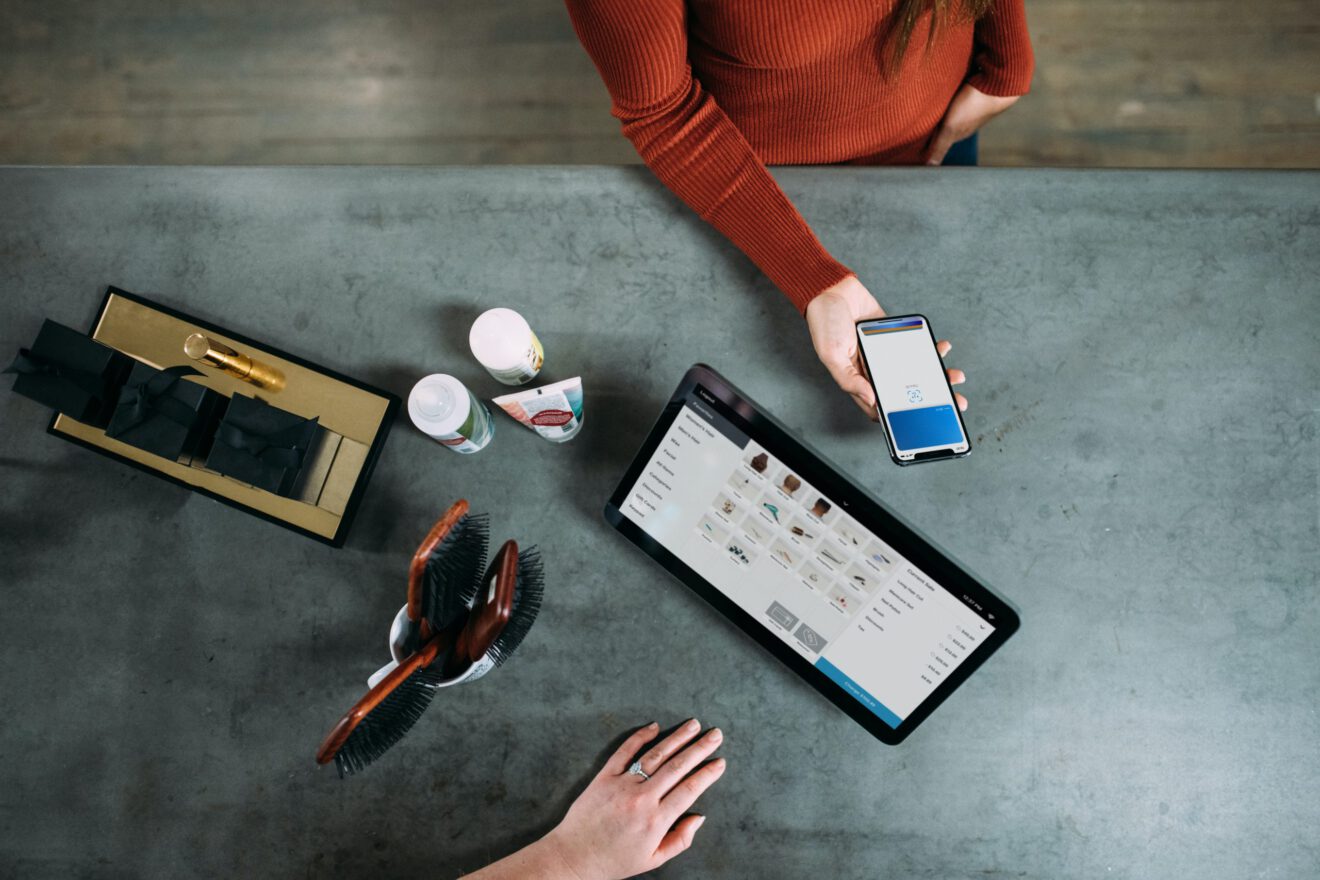Shutdowns related to the onset of the pandemic and its aftermath, forced small business retailers to reimagine their brands’ priorities and consider in-store and e-commerce experiences. Many storefronts had a limited or nonexistent digital footprint and needed to start from scratch. Others had in place informational websites but prioritized adding e-commerce and delivery capabilities. Still others have abandoned their online selling to focus on saving their brick and mortar businesses instead. Independent retailers were forced to rethink not only how they approached their stories but how best to market them.
My business, General Store Cooperative, falls into the latter example. While our business started as a shop-local e-commerce site, and was a valuable platform to incubate other independent businesses, we found that our customer base wanted to see, feel and experience our products in person. While we were able to offer a lifeline to our partner businesses who did not have online selling capabilities at the beginning of the pandemic, once they were up and running with their own sites and systems, we closed our online portal and focused instead on saving our fledgling flagship store, which opened in Maplewood, N.J., in September 2019.
In thinking about this journey, it sounds contradictory – we shut down an e-commerce platform when, according to Harvard Business Review in May 2021, the EY Future Consumer Index found that 60% of US consumers were visiting brick-and-mortar stores less than before the pandemic, and 43% were purchasing products they previously bought in stores online.
Many independent retailers did start websites and e-commerce sites in order to stay connected to their customers during the initial shutdowns.
“Pre pandemic, about 20% of [businesses that partnered with us] had their own online shops,” said Kate

Giovambattista, who co-founded software company Beyond Main, a shop-local mobile marketplace that helps local merchants bridge and enhance the online and offline experience. “Fast forward to today, [it’s] more like 80% of them have their own online shops, or at least an online presence.”
Giovambattista believes there are growth opportunities for independent small businesses in the e-commerce space. Giovambattista reports that online small business sales own about 1.4% of market share. Whereas, big businesses are at 25%.
One of the hurdles for small businesses, Giovambattista said, is that they don’t have the same technological capabilities of big box brands; they don’t have the large tech teams or proprietary technology. That’s one of the reasons she created Beyond Main, to ease the burden. The company has also, in partnership with GoDaddy and the National Main Street Center, designed a free tool to help small businesses find software solutions to start and grow their business online.
Wondering if my business was an outlier in abandoning our online selling since the onset of the COVID-19 pandemic, I spoke with five other New Jersey business owners to learn more about their experiences balancing e-commerce with physical storefronts. Common challenges include the time it takes to manage both selling channels, the high costs of shipping (small businesses don’t have the same buying power as larger corporations) and managing inventory. All agreed that the biggest priority is to create a cohesive customer experience across all selling channels.
Here are their stories.
Marichelle Hills

98 Baker Street, Maplewood, N.J.
Marchille Hills always dreamed of opening a brick-and-mortar shop. In 2014, when she missed out on what she thought was the perfect retail location, a friend suggested Hills use her background as a web designer to test her vision by starting an e-commerce site. Along came Meus Shop, offering a mix of small batch products from independent designers.
“Back then, there weren’t a lot of shops that were similar to Meus, and it was still very much a blogger space,” said Hills. “I got really lucky,” she said, when top blogs and news outlets started featuring her products. “I started to get an online following.”
As her e-commerce business grew over the first two years, so did her dreams of having her own physical retail space. She first shared a brick and mortar location with other small businesses as a collective, and then moved into that dream space – the one she missed out on in 2014 – in May 2017.
Hills said that after opening up her brick and mortar space, her online business really suffered.
“It’s been a challenge to do both,” she said. “Now I’m really trying to get back to [growing the e-commerce business] as that’s where the growth is.”
While her inventory systems sync (she uses Shopify for both e-commerce and point of sale), her biggest challenge is replicating the experiential components of her brick and mortar store.
At Meus, customers can “feel the warmth, the curation, and can see and smell and touch,” Hills said. She is trying to bring this immersive experience to her online customers via her packaging.
“It’s a post-purchase experience as opposed to before you actually buy something,” she said. “I find that concentrating on my current customers that are online and trying to get a repeat purchase is as important as getting new eyeballs on the site.”
Hills is thoughtful about how her online orders are packaged, from the materials she uses, to how it looks, to how it will be opened. She has also changed the way Meus communicates in her newsletters, focusing more on stories and community than products and sales.
“For me, [Meus] has always been based on storytelling and where the products come from,” she added.
Deanna Taylor-Heacock

1875 Springfield Ave., Maplewood, NJ
179 Glenridge Ave., Montclair, N.J.
In 2019, Deanna Taylor-Heacock was on a quest to reduce the amount of garbage her family generated. Through that journey, she became more aware of the zero-waste movement and posted on her Facebook page about her idea to open up a refill shop. The General Store Cooperative approached her about anchoring the new co-retail store opening in Maplewood, and thus began her journey to open up her first storefront in September 2019. Eighteen months later, she opened a second in Montclair, NJ.
While Taylor-Heacock had experience working in e-commerce before starting her own business, her passion was in brick-and-mortar retail.
“There was always the thought of, ‘oh, I’ll do a website, too.’ Because you have to have a website,” she said. But because her shop was about the experience of refilling, she didn’t want to just sell the non-refill products she carried online.
At Good Bottle Refill Shop, the customer brings in or buys a container and fills it with products like dish soap or shampoo. The idea is to reuse vs. collecting (or trashing) plastic containers. The puzzle for Taylor-Heacock was how to recreate that experience for an online customer and with a delivery service.
“What would that look like for me?” she wondered. “It would be competing with Amazon. It needed to be so easy for the customer to order online. They cannot just buy jars from us and have jars and bottles piling up in their home. So I have to somehow take them back.”
When the pandemic hit, Taylor-Heacock sprang into action, first by quickly putting up products onto her website to avoid any kind of store closure.
“My biggest focus was being able to get everything online to deliver to people. I didn’t worry about taking back containers,” she said. “I had a ton of hand sanitizer and hand soap and people needed it.”
She used the next few weeks to refocus and get back to the core of her brand and customer experience. Buying an abundance of containers did not meet the zero-waste mission Good Bottle Refill Shop was trying to achieve, and it was expensive for her customers because she was selling the bottle and the product.
“Nobody’s going to keep ordering over and over and over because they’re just going to have bottles and bottles. I have to take them back.” She thought, “If restaurants can do this, why can’t we?”
She turned to one of her employees, Nikki Rodriguez, who received a bachelors in Chemistry and is studying for her doctorate, and together they came up with a protocol to sanitize the bottles. They learned restaurant operating procedures for sanitization and using the same materials, came up with a process to wash, sanitize and dry the bottles properly. Then they returned their focus to the customer experience.
When customers come to Good Bottle Refill Shop, they focus on refilling bottles they have and paying only for the product. Good Bottle Loop, now available in New Jersey and New York City, replicates this process.
“[The name] talks about being in the loop. If you order a bottle, you use it, you give it back, you get another bottle,” said Taylor-Heacock. “We just made everything like if you were to come into the store.”
Kiahna Malloy
147 Bloomfield Avenue, Montclair, NJ

“I wanted people to experience the ice cream in my head,” said Kiahna Malloy about starting her business, Kreme & Krumbs, in 2012. Her goal was to create a non-traditional ice cream sandwich by combining creamy ice cream using seasonal N.J. ingredients with cake.
Initially her plan was to provide door-to-door delivery through an online experience, but after launching her business with pop-ups at William Sonoma and the General Store Cooperative, Malloy realized the experience of tastings and being able to personally describe the ice cream to customers was extremely valuable for her luxury brand.
“It was a way of getting people to taste the product and buy into the product,” Malloy said. “I could explain or give the description of what we’re about.”
So she switched gears to open up an ice cream scoop store in Bloomfield, N.J., in August 2019. After a successful first quarter, COVID-19hit and Malloy was forced to pivot again, and turn back to her initial e-commerce approach. She began weekly “drops” where customers could buy pints for pick up at her store in Bloomfield.
“That was ridiculous because every Friday our website crashed,” she said. “It was great because of the pandemic everyone was home, so people were ordering online and people were willing to indulge. We got a lot of new customers out of it.”
While Malloy longed to re-open her doors to scoop ice cream, Hurricane Ida had other plans and her storefront was flooded. She was, however, able to operate a successful summer pop-up in neighboring town Montclair and decided to relocate. Her new scoop shop opened on June 3, 2022.
For now, Malloy plans to refocus on the in-store experience. But in the future, she plans to relaunch e-commerce and create a delivery service for her luxury ice cream locally and regionally on the East Coast.
“Because I’m a small business, I’m not able to get such a huge discount like other companies on FedEx,” she said. “That’s what’s important, having that product still frozen when it reaches your doorstep. I think about the cost of that on the customer,” she said.
Malloy also plans to relaunch online sales as she learns the supply and demand at her new location. Her website platform, Square, does sync inventories so she hopes to offer “skip the line” services for customers to pre-order ice cream. But first, she plans to refine the process and make her systems better to create a strong customer experience when buying her luxury ice cream.
Kimaya Salaskar Thakrar

168 Maplewood Ave., Maplewood, N.J.
When Kimaya Salaskar Thakrar first launched her business selling tunics and other clothing from India, her plan was to start out selling exclusively online due to the lower start-up investment. However, she found it difficult selling clothing online due to customers being unsure about sizing. She started producing pop-up events and then rented her own small space before moving into her larger existing store in Maplewood.
“Because it’s clothing, it just made more sense to have a local place where people can actually try the outfits on,” Salaskar said. “It took away from all the returns and people not being sure about what they’re getting, because they could actually view the items.”
The store, which celebrated its seven year anniversary this past May, is now packed with not only Indian dresses and blouses, but with a wide assortment of accessories, home goods, gift ideas and more – featuring all things Kimaya herself loves.
“It’s a combination of so many different things. I have hot sauces, I have chocolates, I have candy, I have a few things for the kitchen,” she said. “Things that I absolutely love and I treasure using myself.” She said she likes to have a wide variety of lower cost items for when customers are looking for gifts or to just bring a smile.
“The main thing is that I want people to come in, feel relaxed, walk around, take a look at things and they might see something that sparks joy,” she added
While Salaskar Thakrar enjoyed focusing on this in-store experience as well as community building through events and collaborations with other local businesses, the pandemic made her pivot quickly to selling online again.
She was surprised to find customers outside of her local area buying inexpensive items when the shipping costs sometimes doubled the price. For example, one customer bought a $5 greeting card and also spent $5 on shipping. When she asked about it, they said they were looking for cat cards and that particular card was perfect for who they wanted to send it to. So they bought it. But Salaskar Thakrar is concerned about customers paying too high shipping costs for inexpensive items.
“I feel like that’s the biggest struggle for me – calculating and working out the shipping aspect of it. We’re not big enough to work with UPS or other companies,” she said.
There were other difficulties in keeping up with the e-commerce business and also operating the storefront once it was able to reopen. For example, she struggled connecting her inventory management systems; she uses ShopKeep in store and BigCommerce online.
Now that her store is back to regular shopping hours, Salaskar Thakrar has changed her approach to the e-commerce site to help better manage her inventory by stocking items like jewelry online as she has more of them, they are less fragile, and they are easier, smaller and less expensive to ship. She continues to create community in her store by hosting events, and extends that online through a Shop Local SOMa Facebook group she manages that gives promotional opportunities to local businesses.
Cat Fisher

65 Valley Street, South Orange, N.J.
19 West South Orange Ave., South Orange, N.J.
Catherine Fisher owns and operates two separate storefronts in South Orange, N.J.: Sadie’s, a retail boutique offering ethically produced clothing and home goods from local suppliers and those working toward a sustainable future, and Kitchen a la Mode, a full-service kitchen supply shop providing all cooking, baking and entertaining needs.
Prior to the pandemic, Kitchen a la Mode did not have online selling capabilities, and while Sadie’s website did, the inventory management system did not sync with her in-store point of sale system.
“When the pandemic happened, the realization that I needed to be able to control my inventory better became really apparent,” Fisher said.
Fisher soon realized there was no one-size-fits all solution – she needed different technology platforms for each store.
“With Kitchen a la Mode, we needed such an intense reporting system,” she said, so Fisher kept her Quickbooks point of sale and added a third-party integration, Webgility, that links inventory management to the website. She relies on Quickbooks’ reports to help her track her reorders. For Sadie’s, she chose Shopify due to its web functionality and in-store POS.
“In fashion, your vendors aren’t making the same things over and over again, unless it’s denim and basics.” she explained. “I didn’t need the ability to suggest purchase orders because the type of product is actually changing. It’s not the same season to season. But with kitchen [products], I need to always have half sheet pans. So my system tells me when I need to order them to make sure I don’t run out.”
Her main focus with both stores’ websites remains as an informational and marketing tool, and to remind customers to shop locally versus big box stores.
“I do a lot of language around how we can do same day delivery, or next day delivery. It’s free if it’s local. I try to get people who are so used to the Amazon experience to look closer to home.”
Fisher does appreciate Shopify’s analytics, helping her track customer behavior, and the SEO that comes with her site. Most sales from Sadie’s still come from local shoppers, though Fisher does notice that a lot of customers look at the website first before coming in to try on the clothing. For Kitchen a la Mode, her e-commerce presence and linked inventory also give customers the ability to see if what they need is in stock, versus calling the store or coming in and leaving empty handed.
Fisher also tries to mimic the experience shoppers have in-store with the online content in newsletters and social media, as well as with the categories and search terms on her websites.
“For Sadie’s, we do a lot in terms of trying to make sure that we’re answering the question that people are asking. So that’s why we have a whole separate category for extended sizes,” she said. She added that she makes it easy to search for products made of certain materials or for companies that have sustainable give-backs, as her customers are looking for those features.
At Kitchen a la Mode, Fisher positions the brand to teach how to use products versus a sales pitch. She extends this to her digital marketing content offering tips, tricks and recipes online and in their newsletter.
“For us it’s more about explaining the best product to use for this type of cooking experience or baking experience,” she said. “That’s the interaction you get from our knowledgeable associates in the store. So we want to replicate that.”
Subscribe to our free newsletter to get the latest marketing news and insights direct to your inbox.
Related SmartBrief retail marketing blogs:
Metaverse spending will be too big to ignore
